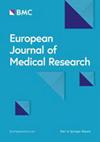Universal penalized regression (Elastic-net) model with differentially methylated promoters for oral cancer prediction
IF 2.8
3区 医学
Q2 MEDICINE, RESEARCH & EXPERIMENTAL
引用次数: 0
Abstract
DNA methylation showed notable potential to act as a diagnostic marker in many cancers. Many studies proposed DNA methylation biomarker in OSCC detection, while most of these studies are limited to specific cohorts or geographical location. However, the generalizability of DNA methylation as a diagnostic marker in oral cancer across different geographical locations is yet to be investigated. We used genome-wide methylation data from 384 oral cavity cancer and normal tissues from TCGA HNSCC and eastern India. The common differentially methylated CpGs in these two cohorts were used to develop an Elastic-net model that can be used for the diagnosis of OSCC. The model was validated using 812 HNSCC and normal samples from different anatomical sites of oral cavity from seven countries. Droplet Digital PCR of methyl-sensitive restriction enzyme digested DNA (ddMSRE) was used for quantification of methylation and validation of the model with 22 OSCC and 22 contralateral normal samples. Additionally, pyrosequencing was used to validate the model using 46 OSCC and 25 adjacent normal and 21 contralateral normal tissue samples. With ddMSRE, our model showed 91% sensitivity, 100% specificity, and 95% accuracy in classifying OSCC from the contralateral normal tissues. Validation of the model with pyrosequencing also showed 96% sensitivity, 91% specificity, and 93% accuracy for classifying the OSCC from contralateral normal samples, while in case of adjacent normal samples we found similar sensitivity but with 20% specificity, suggesting the presence of early disease methylation signature at the adjacent normal samples. Methylation array data of HNSCC and normal tissues from different geographical locations and different anatomical sites showed comparable sensitivity, specificity, and accuracy in detecting oral cavity cancer with across. Similar results were also observed for different stages of oral cavity cancer. Our model identified crucial genomic regions affected by DNA methylation in OSCC and showed similar accuracy in detecting oral cancer across different geographical locations. The high specificity of this model in classifying contralateral normal samples from the oral cancer compared to the adjacent normal samples suggested applicability of the model in early detection.利用不同甲基化启动子的通用惩罚回归(弹性网)模型预测口腔癌
DNA 甲基化在许多癌症的诊断标记中都显示出显著的潜力。许多研究提出了检测 OSCC 的 DNA 甲基化生物标志物,但这些研究大多局限于特定的队列或地理位置。然而,DNA甲基化作为口腔癌诊断标志物在不同地理位置的通用性还有待研究。我们使用了来自 TCGA HNSCC 和印度东部的 384 个口腔癌和正常组织的全基因组甲基化数据。我们利用这两个队列中常见的差异甲基化 CpGs 建立了一个可用于诊断 OSCC 的弹性网模型。该模型通过来自七个国家不同口腔解剖部位的 812 个 HNSCC 和正常样本进行了验证。使用甲基敏感限制性酶消化 DNA 的液滴数字 PCR(ddMSRE)对甲基化进行量化,并用 22 个 OSCC 和 22 个对侧正常样本对模型进行验证。此外,我们还利用 46 个 OSCC 和 25 个邻近正常组织样本以及 21 个对侧正常组织样本进行了热释光测序,以验证该模型。通过 ddMSRE,我们的模型在将 OSCC 与对侧正常组织进行分类方面显示出 91% 的灵敏度、100% 的特异性和 95% 的准确性。利用热测序对模型进行的验证也显示,从对侧正常样本中对 OSCC 进行分类的灵敏度为 96%,特异度为 91%,准确度为 93%,而在邻近正常样本中,我们发现了相似的灵敏度,但特异度为 20%,这表明邻近正常样本中存在早期疾病甲基化特征。来自不同地理位置和不同解剖部位的 HNSCC 和正常组织的甲基化阵列数据显示,检测口腔癌的灵敏度、特异性和准确性与横向相当。在口腔癌的不同阶段也观察到了类似的结果。我们的模型确定了 OSCC 中受 DNA 甲基化影响的关键基因组区域,并在不同地理位置的口腔癌检测中显示出相似的准确性。与邻近的正常样本相比,该模型在对口腔癌对侧正常样本进行分类时具有很高的特异性,这表明该模型适用于早期检测。
本文章由计算机程序翻译,如有差异,请以英文原文为准。
求助全文
约1分钟内获得全文
求助全文
来源期刊

European Journal of Medical Research
医学-医学:研究与实验
CiteScore
3.20
自引率
0.00%
发文量
247
审稿时长
>12 weeks
期刊介绍:
European Journal of Medical Research publishes translational and clinical research of international interest across all medical disciplines, enabling clinicians and other researchers to learn about developments and innovations within these disciplines and across the boundaries between disciplines. The journal publishes high quality research and reviews and aims to ensure that the results of all well-conducted research are published, regardless of their outcome.
 求助内容:
求助内容: 应助结果提醒方式:
应助结果提醒方式:


